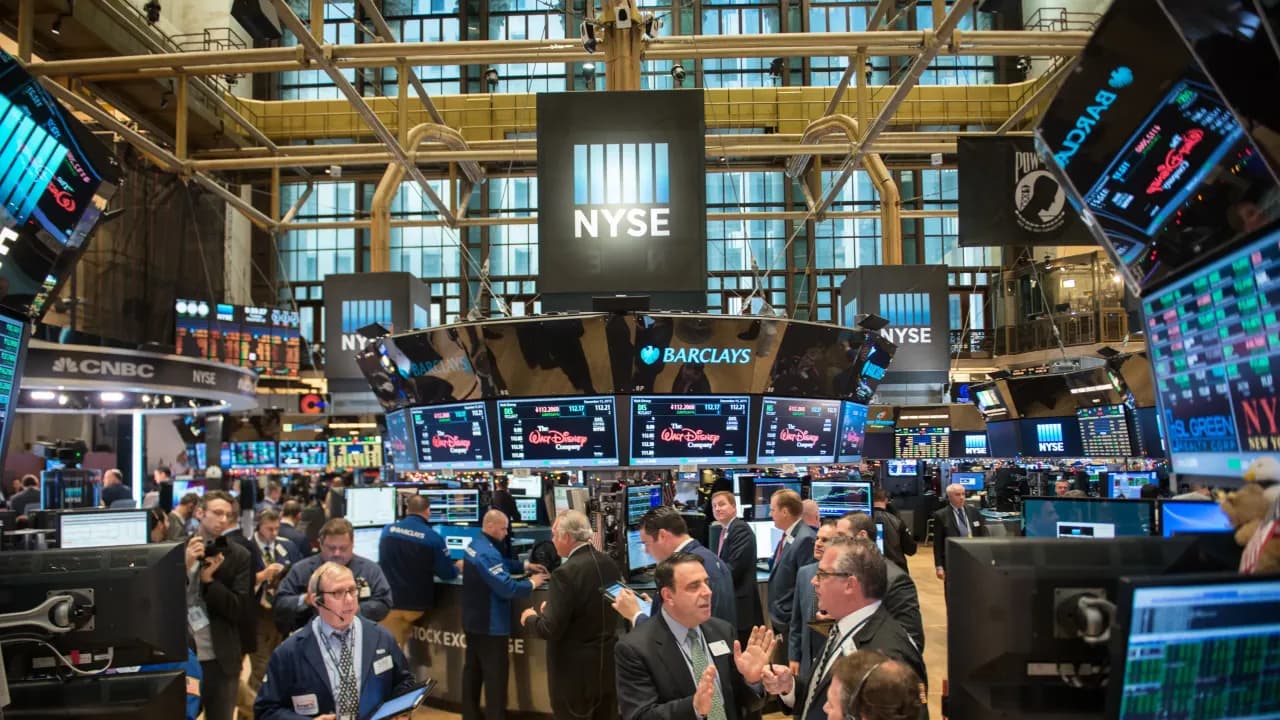Investors weighed stronger PPI data against hopes for easing in September, with sentiment tempered by warnings of potential earnings pressure from rising costs.
U.S. stock futures were higher early Friday after a surprise jump in wholesale inflation sent ripples through markets, trimming expectations for a Federal Reserve rate cut next month.
Traders still anticipate at least half a percentage point of easing in 2025, though swaps now show the odds of a September cut at roughly 85%, down from earlier in the week.
As of 2:46 a.m. ET, Dow, S&P 500, Nasdaq 100, and Russell 2000 futures were all marginally in the green.
The producer price index rose 0.9% in July, the biggest monthly gain in three years, and climbed 3.3% from a year earlier. Services costs jumped 1.1% last month, with some economists citing higher import costs tied to tariffs.
While consumer price data earlier this week suggested a milder pass-through, the latest PPI figures indicate businesses may be absorbing tariff costs rather than passing them on to shoppers, according to analysts cited by Bloomberg.
“Given how benign the CPI numbers were on Tuesday, this is a most unwelcome surprise to the upside,” said Chris Zaccarelli at Northlight Asset Management.
Fawad Razaqzada at City Index and Forex.com noted that while rising input costs could weigh on corporate earnings in the second half of the year, investors don’t appear overly concerned yet.
Gina Bolvin of Bolvin Wealth Management Group said the jump in PPI is “a reminder that the path to lower rates may not be linear, but the broader disinflationary trend is still intact.”
Chris Larkin at E*Trade from Morgan Stanley said the data doesn’t close the door on a September cut, but “the opening may be a little smaller than it was a couple of days ago.”
Eugenio Aleman at Raymond James warned that the full tariff impact will likely show up in next month’s figures, complicating the Fed’s decision.
On Thursday, the S&P 500 slipped as seven of its 11 sectors closed lower, while communication, consumer discretionary, financials, and healthcare stocks bucked the trend.
The Invesco QQQ Trust (QQQ) fell 0.08%, the SPDR S&P 500 ETF (SPY) was flat, while the SPDR Dow Jones Industrial Average ETF Trust (DIA) eased 0.06% and the iShares Russell 2000 ETF (IWM) dropped 1.29%.
Next week’s earnings calendar features Walmart, Home Depot, Intuit, TJX Companies, and Lowe’s.
Richmond Fed President Tom Barkin said he sees signs that the environment for U.S. consumers improved in July after weakness earlier in the year.
“I am getting a smell of a stronger July on the consumer side,” he said Thursday during a National Association for Business Economics webinar, noting that weekly credit card data “looks a lot healthier.”
Barkin, who is not a voter on interest rate decisions this year, spoke ahead of Friday’s retail sales report for July from the Census Bureau. “The underlying dynamics still feel very healthy to me,” he said. “People have jobs. Real wages are going up.”
Oil prices slipped early Friday, while gold inched higher to trade near $3,390 an ounce.
U.S. 10-year Treasury yields eased another 4.3 basis points to 4.285%. In currencies, the dollar held steady against the euro and pound, but the yen strengthened after upbeat economic growth data showed Japan’s exports weathering new U.S. tariffs.
Asian stocks were mixed, with Japan’s Nikkei 225 bouncing 1.6% after its sharpest fall since April, Hong Kong edging lower, and Chinese markets climbing on speculation of fresh stimulus.
For updates and corrections, email newsroom[at]stocktwits[dot]com.<
